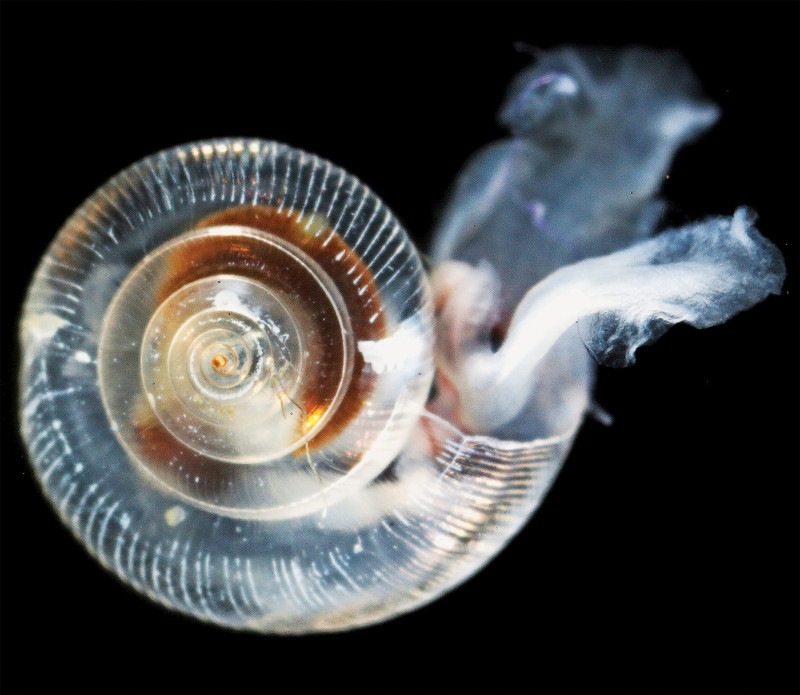We're open daily this holiday! View holiday hours
Science News
Marine Snails and Acidic Waters
May 7, 2014
by Molly Michelson

While there is no doubt that ocean acidification is already affecting life in the sea, a new study published last week about tiny marine snails known as pteropods indicates how complex the subject can be.
The article, published in the Proceedings of the Royal Society B and led by NOAA (National Oceanic and Atmospheric Administration) scientists, discovered that 53 percent of the pteropods living along a stretch of the continental shelf from northern Washington to central California had shells that were severely dissolving. The shells were pitted, which “made them look like ‘cauliflower’ or ‘sandpaper,’” lead author Nina Bednaršek told ScienceNOW.
As carbon dioxide is absorbed in the oceans, the sea water becomes more acidic or lower in pH. These changes in ocean chemistry affect marine life, particularly organisms with calcium carbonate skeletons or shells, such as corals, oysters, mussels, and small creatures in the early stages of the food chain such as pteropods.
Pteropods are food for pink salmon, mackerel and herring—fish that humans consume and are important to the economy.
But it’s possible the pteropods have been dealing with acidic waters for awhile, says the Academy’s Peter Roopnarine. “Upwelling water off the West Coast is normally quite acidic. It remains unclear how much, if at all, pH has fallen recently as a consequence of warming,” he says. “It ultimately will fall significantly, but, I would think it possible that pteropods living in those waters have always had pitted shells.
“The question then is, has it gotten any worse?” he asks. “Why hasn't anyone looked at historical shells, such as from collections? There must be shells from this region in collections, maybe at the Academy, Scripps, the Smithsonian, etc. That’s how we have to establish baselines; it’s too late to do that with current organisms.”
Image: NOAA